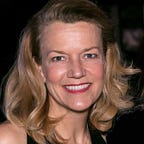Forward Thinking and Preventative Medicine in New York City
Preventative medicine and health has never reached the policy level in America. Pre COVID19, health outcomes in the United States relative to healthcare costs were jaw-dropping. The NHEA estimates 2018 costs at $3.6 trillion, more than $11,000 per person. Meanwhile, our life expectancy at 78.54 years ranks 26th in the world, according to the CDC, below that of Chile, Slovenia, and Greece. With nearly ¾ of the population overweight, hundreds of millions of Americans have a greater risk for coronavirus infection due to lifestyle conditions that accompany the weight management reality: heart disease, respiratory illness, diabetes, and cancer.
As April rolls along, reacting to COVID19 will continue to consume first responders, nurses, doctors, and others on the front lines. In laboratories, scientists are focused on a vaccine along with both of the tests that have been completely botched in the United States: viral screening and antibody testing. Relaxing physical distance measures shouldn’t happen until we can test, which sadly, is still not happening.
Ordinary New Yorkers are simply trying to keep it together. Whether they have essential work to do or not, we are doing our best. Managing the household without going places and seeing people. Managing lost income. Managing the learning environment for children. Managing expectations and sanity. No one is getting through this crisis without suffering. Later, there will be plenty of time to analyze why some New Yorker’s lives were totally destroyed or turned upside down, and why others were simply inconvenienced.
But now could be, and should be, a time when policymakers think about preventive medicine and the responsibility that local governments have for the quality of life of its citizens. Public health is not just about hospitals, insurance, costs, and care. Public health should also be about the way that New Yorkers tackle neighborhood issues such as healthy food inequities, the lack of green space and gardening, and the carbon footprint of construction, transportation and sanitation.
Policymakers in New York have been unwilling to tackle these issues in any meaningful way. Like hurricane force winds, the political winds have circled around the eye of a perfectly formed storm, where in the center lies the super-rich and dollar signs. Policy decisions have swayed and shifted to accommodate the relative calm of this “affluence-eye” despite the damage all around, to working New Yorkers, neighborhoods and communities. This has to change.
Forward-thinking policymaking is possible! Forward-thinking in policy development is happening in other urban locations around the world. Brent Toderian of Urban Works in Vancouver has rightly pointed out that street closures for pedestrian and cycling lanes during COVID19 is something that could be used as a catalyst for permanent policy change. With fewer New Yorkers out on the streets, closing down parts of Broadway, Second Avenue or other wide streets would provide an opportunity to measure and monitor new and untested policies. Not to mention the chance to stand up and move around.
New York, still clinging to its commitment not to disturb an equilibrium perpetuated by affluence and political influence, experimented with a handful of tiny strips of road at the end of March. This “open streets” concept was accompanied by heavy police presence and then quickly cancelled because people weren’t using the spaces, and the NYPD was needed elsewhere. But why, for example, would Harlem or Chinatown residents use a tiny piece of midtown Park Avenue? How would they even get to it?
There is still time to rethink this concept and get people out of their homes for light exercise, a feature of preventative medicine that we know works. In Manhattan, for example, linking parks with car-free open streets (or even partially closed streets) would provide New Yorkers with a way to get outside now. Monitoring these spaces could then lead to policymaking that reduces our dependency on cars and aligns with the goals of a sustainable green future.
Forward thinking is preventative medicine. Let’s get to work. It’ll take big thinking and little egos, but the future of New York life depends on a different way.
